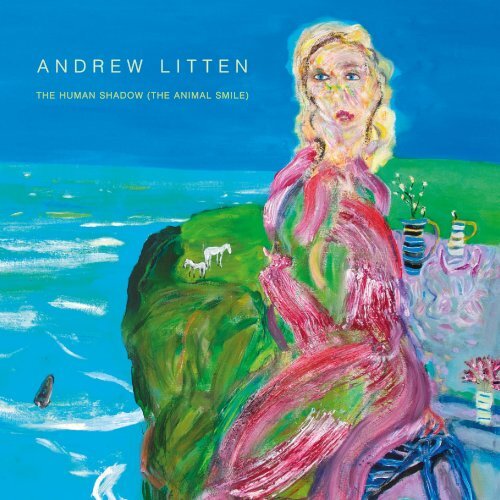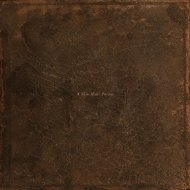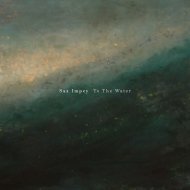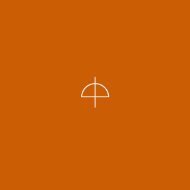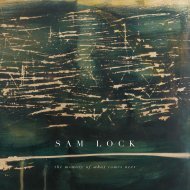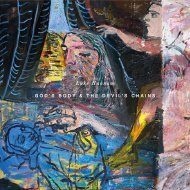Andrew Litten 'The Human Shadow (The Animal Smile)'
Fully illustrated catalogue of the solo exhibition 'The Human Shadow (The Animal Smile)' by Andrew Litten at Anima Mundi, St. Ives.
Fully illustrated catalogue of the solo exhibition 'The Human Shadow (The Animal Smile)' by Andrew Litten at Anima Mundi, St. Ives.
Create successful ePaper yourself
Turn your PDF publications into a flip-book with our unique Google optimized e-Paper software.
ANDREW LITTEN<br />
THE HUMAN SHADOW (THE ANIMAL SMILE)<br />
CATALOGUE.indd 1 08/07/2023 12:08
CATALOGUE.indd 2 08/07/2023 12:08
“Invisible threads are the strongest ties.”<br />
Friedrich Nietzsche<br />
CATALOGUE.indd 3 08/07/2023 12:08
<strong>Andrew</strong> <strong>Litten</strong><br />
<strong>The</strong> <strong>Human</strong> <strong>Shadow</strong> (<strong>The</strong> <strong>Animal</strong> <strong>Smile</strong>)<br />
‘<strong>The</strong> <strong>Human</strong> <strong>Shadow</strong> (<strong>The</strong> <strong>Animal</strong> <strong>Smile</strong>)’,<br />
<strong>Andrew</strong> <strong>Litten</strong>’s latest solo exhibition at<br />
Anima Mundi, has been created over the<br />
last three years, bringing together multiscale<br />
paintings with works on paper<br />
and original sculptures including a life<br />
size bronze.<br />
<strong>Litten</strong> ranks among the rule-benders. His<br />
paintings are unapologetically figurative<br />
but refuse to follow figurative convention.<br />
<strong>The</strong>y sit on the fence between individual<br />
consciousness and objective reality: to<br />
borrow the title of one of his paintings, on a<br />
‘liminal stage’.”<br />
<strong>The</strong> raw, gestural, often visceral figuration<br />
that <strong>Litten</strong> is known for, is heightened<br />
and further nuanced by the expressive<br />
potential of working across various media.<br />
<strong>The</strong> art critic Laura Gasgoigne recently said<br />
“emotions are not just difficult to articulate<br />
in words; they are also impatient of the<br />
rules of art. To facilitate expression, rules<br />
must be bent and it is often the self-taught<br />
artists – Vincent van Gogh, Paul Gauguin,<br />
Francis Bacon - who dare to bend them.<br />
Building upon his last exhibition ‘Concerning<br />
<strong>The</strong> Fragile’ which was created prior to<br />
lockdown with particular focus towards the<br />
theme of human vulnerability; this exhibition<br />
arguably embodies wider ranging subject<br />
matter, further tonality and encourages<br />
broader complex and often contradictory<br />
emotive readings of human identity, hope,<br />
loss, disturbance and transience.<br />
This selection of works, continues the artists<br />
2<br />
CATALOGUE.indd 4 08/07/2023 12:08
exploration of existential human solitude<br />
through our innate capacity and desire to<br />
connect with, and also disconnect from,<br />
others and the world that we inhabit. As<br />
the exhibition title alludes, ‘<strong>The</strong> <strong>Human</strong><br />
<strong>Shadow</strong>’ reflects upon territory that <strong>Litten</strong><br />
is unafraid to explore; of a hidden or<br />
suppressed, perhaps darker or troubled<br />
element of human nature. However,<br />
notably ‘<strong>The</strong> <strong>Animal</strong> <strong>Smile</strong>’ refers to a deep<br />
rooted desire or absolute need to connect<br />
with nature in order to bring peace and<br />
balance to the psyche and healing through<br />
connection with the wider world, extending<br />
beyond the human. However, even this clear<br />
and relatively simple notion or objective<br />
becomes emotionally ambiguous as the<br />
anthropomorphic suggestion of an ‘animal<br />
smile’, suggests potential of a discordant<br />
empathetic reading that may speak more<br />
of continued disconnect than of union. Yet<br />
this is not the point - without whitewashing<br />
a modicum of pessimism, the exuding hope<br />
radiating within this body of work is sited in<br />
the recognition of a real desire to entwine<br />
with something ‘other’ beyond ’self’, no<br />
matter how difficult the achievement may<br />
be, it is this ‘desire’ that offers a bridge<br />
to something fuller. <strong>Litten</strong> addresses such<br />
contradictions without giving much away<br />
when he says “I think the art in this show has<br />
lots of little narratives to interpret.” As ever,<br />
with <strong>Andrew</strong> <strong>Litten</strong>, it is not about clearing up<br />
the confusion, but learning to live with it. <strong>The</strong><br />
wider message, I think one of love, becomes<br />
greater than the sum of its parts.<br />
Joseph Clarke, 2023<br />
3<br />
CATALOGUE.indd 5 08/07/2023 12:08
4<br />
CATALOGUE.indd 6 08/07/2023 12:08
CATALOGUE.indd 7 08/07/2023 12:08<br />
5
Sequence of Destinations (Study for Returned)<br />
oil on board and frame, 46 x 30 cm<br />
previous page : Returned<br />
oil on canvas, 200 x 170 cm each (diptych)<br />
6<br />
CATALOGUE.indd 8 08/07/2023 12:08
CATALOGUE.indd 9 08/07/2023 12:08<br />
7
8<br />
CATALOGUE.indd 10 08/07/2023 12:08
Contained (Study for Returned)<br />
oil on board and frame, 42 x 35 cm<br />
9<br />
CATALOGUE.indd 11 08/07/2023 12:08
Returned<br />
mixed media on paper, 65 x 98 cm<br />
10<br />
CATALOGUE.indd 12 08/07/2023 12:08
CATALOGUE.indd 13 08/07/2023 12:08<br />
11
16<br />
CATALOGUE.indd 14 08/07/2023 12:08
Listening<br />
epoxy clay on wood base, 44 x 23 x 16 cm<br />
17<br />
CATALOGUE.indd 15 08/07/2023 12:08
Listening<br />
bronze (edition of 3), 145 x 63 x 80 cm<br />
18<br />
CATALOGUE.indd 16 08/07/2023 12:09
CATALOGUE.indd 17 08/07/2023 12:09<br />
19
20<br />
CATALOGUE.indd 18 08/07/2023 12:09
CATALOGUE.indd 19 08/07/2023 12:10<br />
21
22<br />
CATALOGUE.indd 20 08/07/2023 12:10
Boy & Horse<br />
mixed media on paper, 92 x 67 cm<br />
previous page : Footprints<br />
oil on canvas, 180 x 120 cm / 160 x 120 cm (diptych)<br />
23<br />
CATALOGUE.indd 21 08/07/2023 12:10
Boy & Horse<br />
oil on canvas, 220 x 190 cm<br />
24<br />
CATALOGUE.indd 22 08/07/2023 12:10
CATALOGUE.indd 23 08/07/2023 12:10<br />
25
26<br />
CATALOGUE.indd 24 08/07/2023 12:10
Thinking of Flight<br />
epoxy clay, wood, paint, 29 x 16 x 13 cm<br />
27<br />
CATALOGUE.indd 25 08/07/2023 12:10
Thinking of Flight<br />
oil on canvas, 120 x 90 cm<br />
28<br />
CATALOGUE.indd 26 08/07/2023 12:10
CATALOGUE.indd 27 08/07/2023 12:11<br />
29
Thinking of Flight<br />
mixed media on paper, 48 x 38 cm<br />
30<br />
CATALOGUE.indd 28 08/07/2023 12:11
Interview with <strong>Andrew</strong> <strong>Litten</strong> and Lucy Cox<br />
LC: While in school, your interest in expressionist art led you to attend life-drawing classes. However, you<br />
eventually decided against pursuing art education further, finding it ‘restricting’ and ‘claustrophobic’ and<br />
instead embarked on a journey across Britain, searching for diverse subjects. For several years, you created<br />
art at home – on the kitchen table, in the attic, on the bedroom floor – rather than in an external studio,<br />
inspired by observing people’s everyday lives. Although at the time you probably didn’t anticipate where<br />
these experiences would lead, looking back, what impacts do you think they had on you?<br />
AL: Well, I think not continuing college was perhaps a mistake as I isolated myself too much. I don’t recommend it.<br />
I left art college early because I became tired of what I then perceived as an ego-driven environment which made<br />
me uncomfortable – but perhaps this was more of a personal issue. In the ‘90s, art schools seemed to have more of<br />
an anti-painting agenda. I wanted to retreat to my life before college where I felt excited by the world around me. At<br />
that time, I liked the idea of creating a body of figurative work in an impromptu way and not policing my thoughts.<br />
I used found-objects as surfaces to work on or assembled and connected with commonplace images. I created<br />
hundreds of works a year and am still discovering them in my parents’ loft when I visit! Emma (my wife) and I had<br />
children young, so I gave up on the idea of exhibiting art and just quietly created for about a decade in obscurity.<br />
LC: Could you expand on your idea of the studio as a ‘big sketchbook’ where you surround yourself with<br />
unfinished paintings, drawings, and other artists’ work?<br />
AL: Yes, I like the idea that my studio is a big sketchbook that I can move around in. It’s fun but serious. It’s the<br />
idea of being consumed by creativity. I am engaging mentally and physically; the representations are often life-size,<br />
so it becomes behavioural, too, as I am aware of my own body in relation to the work. I want the art I make to be<br />
charged with a current of connectivity and feel alive, like a mass of raw nerves.<br />
LC: How would you define your approach to representing the human body? You are very much a figurative<br />
artist.<br />
AL: My approach to the human body is to make the representation read emotionally. It is important that descriptive<br />
information is present, but without slowing the reading or jolting the flow of engagement. I suppose this sounds<br />
simple, but it takes time to work through a lot of visual information. Depth of emotion comes through consideration<br />
and reassessment of life experiences. To be properly visually emotive you have to take risks and be articulate<br />
embracing change. For me, the figure can radically change position or shape as the work evolves. I have to go with<br />
it and support the changes compositionally and anatomically. I think this is important if you want to really represent<br />
something in a tangible convincing way that is not just stylistic. <strong>The</strong> face is an essential element for me. We all<br />
intuitively read people’s faces to understand their thinking and essentially, we go for the eyes and mouth.I love the<br />
fact that the human body is the most powerful timeless model of expression and I enjoy the process of trying to find<br />
my own way within a genre that has historical weight behind it.<br />
LC: I think coping with instability is part of wanting to feel alive, which I sense is significant in your practice.<br />
It’s refreshing to see an artist examine the human condition so intimately in the digital age. Do you believe<br />
that your art mirrors yourself at times?<br />
AL: I hate it when people assume all my work is just about me! I know you weren’t absolutely meaning that though.<br />
I have just started my first large scale self-portrait, but I don’t generally want to just put myself at the centre of my<br />
creativity. I want to look outwards for widest emotive range and connections. <strong>The</strong> subjects are mainly based on<br />
people I know, so ideas are developed with their thoughts or stories as well as my own perceptions. I love the stress<br />
31<br />
CATALOGUE.indd 29 08/07/2023 12:11
this can put on art to mediate multi perceptions and conflicting input. I am there mirrored too; I suppose, but I think<br />
the reaching out is vital. I really like the idea that art can carry an energy of the longing to connect.<br />
LC: What are your habits? Do you have a daily routine?<br />
AL: I don’t think so. My studio is at home, so I pick up the creativity without effort. A predetermined technical<br />
approach bores me quickly; if I decide to do one thing, I usually start to see equal worth in doing the opposite.<br />
With this attitude, the subject becomes the driving force. I have no habits or routines in the studio. It’s best for me<br />
that its all pure exploratory creativity.<br />
I unsually work fast, but can sometimes take years to get them right and usually with dramatic changes as they are<br />
brought to life. As a figurative artist, I think the aim is to trick the mind into meaningful recognition. <strong>The</strong>re is a huge<br />
difference between simply reading an image of something, as opposed to feeling engaged on a deeper sensory<br />
level when the mind properly connects. <strong>The</strong> artwork should be the focus of intensified activity where the fields of<br />
reference have been widened. It involves a high level of engagement for me. My works on paper are quicker which<br />
often offers a way into new ideas.<br />
My attitude is to engage in an unguarded way. Luckily, I am able to focus for long periods of time and I work the<br />
materials until it feels right - even if the results look wrong and unexpected, it must feel right. Its all very precarious<br />
and feels a bit mind bending at times.<br />
LC : Who are your biggest influences?<br />
AL: Well, life piles on experiences and influences. <strong>The</strong> young teenage me was very drawn to the gritty rigorous<br />
ethic of the School of London painters. It was meaningful and I loved the utter dedication of those artists to their<br />
life’s work. I realised age 16 that I could get from Aylesbury to Marylebone and visit Marlborough Fine Art easily.<br />
I became a bit obsessed with that gallery which at that time had solo shows of Auerbach after Rego after Bacon<br />
after Freud. I suppose it was also significant because as a teenager my mind was young and I was discovering<br />
important work in the flesh, which set me up to value an intimate one to one connection with art.<strong>The</strong>n when I was<br />
20, I spent a lot of time around Leicester area. <strong>The</strong> Leicester Museum collection of German Expressionist prints<br />
was extraordinary. <strong>The</strong> emotive articulacy and directness of those expressionist prints was a significant influence<br />
on what I wanted with my early work.<br />
I now think I would find it impossible to clearly say who my art influences are. <strong>The</strong>re is so much historically. In terms<br />
of contemporary artist’s I tend to gravitate towards female art as it is typically more emotionally honest - Tracey<br />
Emin and Jenny Saville for instance. Louise Bourgeois is so important, and she reminds us that the artwork should<br />
always be more interesting than anything the artist says, and the art should be more complex in spirit, and physically<br />
diverse, than any one exhibition can contain. I love that feeling – that with a great artist - there is always more<br />
to be extract and interpreted. Van Gough is always interesting because no one can quite work him out. Confusion<br />
is interesting. Matisse impresses me because he could only be a kind person to have created the work he did. I say<br />
that because I’ve been recently thinking about a purity in art, so this occurred to me with Matisse and really moved<br />
me. So, overall, my art influences are all over the place and changeable.<br />
<strong>The</strong>re are so many things that can spark an idea. It might be a film sequence, book or newspaper article that gives<br />
inspiration. Sometimes a conversation. It’s absolutely bizarre how regularly the spark that is needed just appears<br />
in an unexpected way.<br />
LC: You have repeatedly depicted dogs in your paintings which often appear calm or irate alongside male<br />
figures. When did you start using this motif?<br />
32<br />
CATALOGUE.indd 30 08/07/2023 12:11
AL: I started depicting animals in my very early work and they became part of the domestic humble aesthetic<br />
I was wanting. I also used to include taxidermy animal parts of birds in assemblages and had a lot of fun<br />
with that.<br />
When I later switched to life size figuration around 2010, the increase in intensity of my engagement was<br />
significant, physically, and psychologically. <strong>The</strong> animal references, I think, exist as an extension of the figurative<br />
identity, like a smaller compartmentalised state that co-exist with a different energy. It’s fascinating how<br />
animals use their senses in a different way to us, and I sometimes try to creatively suggest this swich in<br />
interpretation - like an alternative sensory stimulus to embody. I can’t particularly explain what I mean, now<br />
that I am trying to put it into words, but when I am creating, I can feel it, and it makes sense why the animals<br />
need to be there.<br />
Art has often represented animals to convey the natural world with a respect between humanity and nature. I<br />
think the line between us and animals is perhaps more in our imagination that we pretend. I also like the idea<br />
of using animal references in my art to represent wider anxieties of the uncomfortable animal instincts within<br />
us - group behaviour - wild freedom- only being partly civilised. In this way, animals are good for us to think<br />
with in art.<br />
LC: That’s a good way of putting it: animals as an extension of the figurative identity and a way to<br />
engage with art. Someone, I can’t quite remember whom, described Francis Bacon’s dog paintings as ‘the<br />
anguish of contemporary life’, which seems to resonate now, post-COVID. Looking at your animal works,<br />
I am reminded also of mythological hybrid creatures such as sphinxes: half human, half feline. In Greek<br />
mythology, it is said they symbolise mystery, enigma and brutality.<br />
AL: Yes, that brutality can be there. Lucas Cranach’s paintings of animals often have a curious blending beast<br />
and humanised qualities, particularly in his allegorical compositions. I love his painting Garden of Eden. His<br />
paintings are oddly primitive and sophisticated too, and I really respond to that.<br />
LC: It is interesting to see more of your sculpture. What is your approach to this medium in relationship<br />
to painting?<br />
AL: I have always made 3D work along with painting, but this used to be mainly assemblage. When I started<br />
focussing on large scale paintings, I began making models with clay to refer to. I like the way sculpting seems<br />
to use different areas of the brain. <strong>The</strong>se sculptures are made as independent things but often relate to certain<br />
paintings. About 3 years ago I realised that casting in bronze can better reflect their intentions and with the<br />
support of Anima Mundi we made this happen.<br />
LC: What inspired the exhibition and why the title ‘<strong>The</strong> <strong>Human</strong> <strong>Shadow</strong> (<strong>The</strong> <strong>Animal</strong> <strong>Smile</strong>)’?<br />
AL: I wanted a title that was difficult to pin down. I like the disconnect it creates in the mind with space for interpretation.<br />
I wanted this exhibition to express energies and instincts that are at times unexpected, or defy logic.<br />
I had the idea of a shadow imprinted in our DNA, however putting it more into words is not want I want to do.<br />
As a side note - and I don’t want to go too far down the autobiographical route and explain everything from a<br />
personal perspective, but it is unavoidable fact that I have been grieving a significant loss. <strong>The</strong> re-balance and<br />
cognitive rewiring is profound for me at this stage. <strong>The</strong> need for a meaningful connect with nature, people and<br />
creativity is deeply felt. Grief has created a surge of opened vision. This exhibition is unavoidably an expression<br />
of this, and it is, I believe, positive in outlook. But of course, an emotional connect can be complex, confused<br />
or frustrated so I also want the art to speak this language of longing.<br />
33<br />
CATALOGUE.indd 31 08/07/2023 12:11
Man with Birds<br />
mixed media on paper, 100 x 70 cm<br />
34<br />
CATALOGUE.indd 32 08/07/2023 12:11
CATALOGUE.indd 33 08/07/2023 12:12<br />
35
36<br />
CATALOGUE.indd 34 08/07/2023 12:12
Boy With Twig<br />
oil on canvas, 100 x 80 cm<br />
37<br />
CATALOGUE.indd 35 08/07/2023 12:12
Father & Child<br />
epoxy clay on wood base, 66 x 19 x 37 cm<br />
38<br />
CATALOGUE.indd 36 08/07/2023 12:12
CATALOGUE.indd 37 08/07/2023 12:13<br />
39
40<br />
CATALOGUE.indd 38 08/07/2023 12:13
Mother With First Child<br />
mixed media on paper, 92 x 67 cm<br />
41<br />
CATALOGUE.indd 39 08/07/2023 12:13
Mother With First Child<br />
oil on canvas, 80 x 50 cm<br />
42<br />
CATALOGUE.indd 40 08/07/2023 12:13
CATALOGUE.indd 41 08/07/2023 12:14<br />
43
44<br />
CATALOGUE.indd 42 08/07/2023 12:14
With Her Cat<br />
mixed media on paper, 52 x 56 cm<br />
45<br />
CATALOGUE.indd 43 08/07/2023 12:14
Frightened Cat<br />
epoxy clay, wire, paint, hair on wood base, 40 x 32 x 17 cm<br />
46<br />
CATALOGUE.indd 44 08/07/2023 12:14
CATALOGUE.indd 45 08/07/2023 12:15<br />
47
48<br />
CATALOGUE.indd 46 08/07/2023 12:15
Gathering<br />
oil on canvas, 60 x 60 cm<br />
49<br />
CATALOGUE.indd 47 08/07/2023 12:15
True Nature (Lie)<br />
oil on canvas, 80 x 60 cm<br />
50<br />
CATALOGUE.indd 48 08/07/2023 12:15
CATALOGUE.indd 49 08/07/2023 12:15<br />
51
True Nature (Lie)<br />
mixed media on paper, 75 x 55 cm<br />
52<br />
CATALOGUE.indd 50 08/07/2023 12:16
Nurture<br />
mixed media on paper, 70 x 60 cm<br />
53<br />
CATALOGUE.indd 51 08/07/2023 12:16
Nurture<br />
oil on canvas, 90 x 80 cm<br />
54<br />
CATALOGUE.indd 52 08/07/2023 12:16
CATALOGUE.indd 53 08/07/2023 12:16<br />
55
56<br />
CATALOGUE.indd 54 08/07/2023 12:16
This Heavy <strong>Shadow</strong> Day<br />
oil on canvas, 190 x 85 cm<br />
57<br />
CATALOGUE.indd 55 08/07/2023 12:16
This Heavy <strong>Shadow</strong> Day (Nothing Matters)<br />
mixed media on paper, 60 x 50 cm<br />
58<br />
CATALOGUE.indd 56 08/07/2023 12:16
Man Mask<br />
oil on canvas, 80 x 55 cm<br />
59<br />
CATALOGUE.indd 57 08/07/2023 12:16
60<br />
CATALOGUE.indd 58 08/07/2023 12:17
Discredited<br />
oil on canvas, 70 x 100 cm<br />
61<br />
CATALOGUE.indd 59 08/07/2023 12:17
Existing Together<br />
oil on canvas, 200 x 160 cm<br />
62<br />
CATALOGUE.indd 60 08/07/2023 12:17
CATALOGUE.indd 61 08/07/2023 12:17<br />
63
64<br />
CATALOGUE.indd 62 08/07/2023 12:17
Changing Places<br />
oil on canvas, 70 x 65 cm<br />
65<br />
CATALOGUE.indd 63 08/07/2023 12:17
Liminal Stage<br />
oil on canvas, 190 x 280 cm<br />
66<br />
CATALOGUE.indd 64 08/07/2023 12:17
CATALOGUE.indd 65 08/07/2023 12:18<br />
67
Waving<br />
epoxy clay, wood, paint, 50 x 24 x 17 cm<br />
68<br />
CATALOGUE.indd 66 08/07/2023 12:18
Biography<br />
<strong>Andrew</strong> <strong>Litten</strong>’s dynamic and gestural figurative artworks express a strong interest in the<br />
universal complexity of everyday existence. Dealing with humanistic themes such as love,<br />
sensuality, fear, anger, loss, nostalgia, mundanity, personal growth and perceived identity<br />
normality or disturbance. Works are created with an unguarded, empathetic attitude, like<br />
so many expressionistic artists, a rawness of approach combined with an often viscous<br />
application of paint is also key to the extreme experience felt from the work. Gesture<br />
and nuance inspire extreme emotive reading, perhaps subversive, tender, passionate,<br />
ambivalent, malevolent or compassionate, our response becomes one of allure or repulsion.<br />
<strong>Andrew</strong> <strong>Litten</strong> is a British artist, born in Aylesbury, Buckinghamshire in 1970. He currently<br />
works from his studio in Fowey, Cornwall. He is a self-taught artist leaving art college as a<br />
teenager having found it to be too restrictive to his aspired method of working. For a decade<br />
he created mostly small-scale works using humble domestic or found materials (including<br />
envelopes and assembled furniture parts). <strong>The</strong> work made at this time deliberately<br />
challenged ideas of art elitism and art as commodity. He then moved to Cornwall in 2001<br />
and chose to begin exhibiting. Early success came when his work was included in an<br />
exhibition titled ‘Nudes’ in New York City, (along with Jacob Epstein and Pierre-Auguste<br />
Renoir), where his work was highlighted and reviewed by the New York Times. Shortly<br />
after he had four consecutive solo exhibitions each of which included publications at<br />
Goldfish Fine Arts in Penzance, Cornwall. Other notable exhibitions included ‘Move’ at<br />
Vyner Street, London, during Frieze Art Week 2007, where his work ‘Dog Breeder’, created<br />
as a twisted and emphatic anti-art statement, was exhibited. He was also included in<br />
‘No Soul For Sale’ at Tate Modern Turbine Hall, London in 2010. In 2012 he held a major<br />
solo exhibition at Millennium in St Ives, Cornwall and that year was given a guest solo<br />
exhibition at L13 Light Industrial Workshop, London. He has also held large-scale solo<br />
exhibitions at Spike Island and Motorcade FlashParade in Bristol. Ordinary Bodies, Ordinary<br />
Bones was conceived with support from <strong>The</strong> Arts Council, UK and will be exhibited at<br />
Anima Mundi in 2018. Works have been included in numerous international curated mixed<br />
exhibitions in Berlin, Dublin, Siena, Milwaukee, Canberra, Watou and New York City and<br />
in Venice during the 54th Biennale. Most recently paintings have been exhibited in four<br />
major museums in China and Poland National Museum. <strong>Andrew</strong> <strong>Litten</strong> paintings feature in<br />
numerous international private and public collections. He is represented by Anima Mundi.<br />
69<br />
CATALOGUE.indd 67 08/07/2023 12:18
CATALOGUE.indd 68 08/07/2023 12:18
CATALOGUE.indd 69 08/07/2023 12:18
Published by Anima Mundi to coincide with <strong>Andrew</strong> <strong>Litten</strong> ‘<strong>The</strong> <strong>Human</strong> <strong>Shadow</strong> (<strong>The</strong> <strong>Animal</strong> <strong>Smile</strong>)’<br />
All rights reserved. No part of this publication may be reproduced, stored in a retrieval system or transmitted in any form or<br />
by any means electronic, mechanical, photocopying, recording or otherwise without the prior permission of the publishers<br />
Anima Mundi . Street-an-Pol . St. Ives . Cornwall . +44 (0)1736 793121 . mail@animamundigallery.com . www.animamundigallery.com<br />
CATALOGUE.indd 70 08/07/2023 12:18
“We are like islands in the sea, separate on the surface<br />
but connected in the deep.”<br />
William James<br />
CATALOGUE.indd 71 08/07/2023 12:18
www.animamundigallery.com<br />
CATALOGUE.indd 72 08/07/2023 12:18


